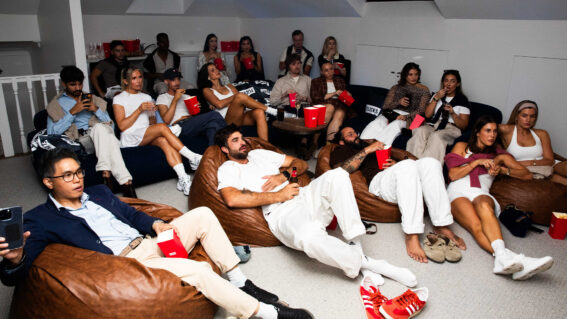Interview: ‘It Follows’ star Maika Monroe
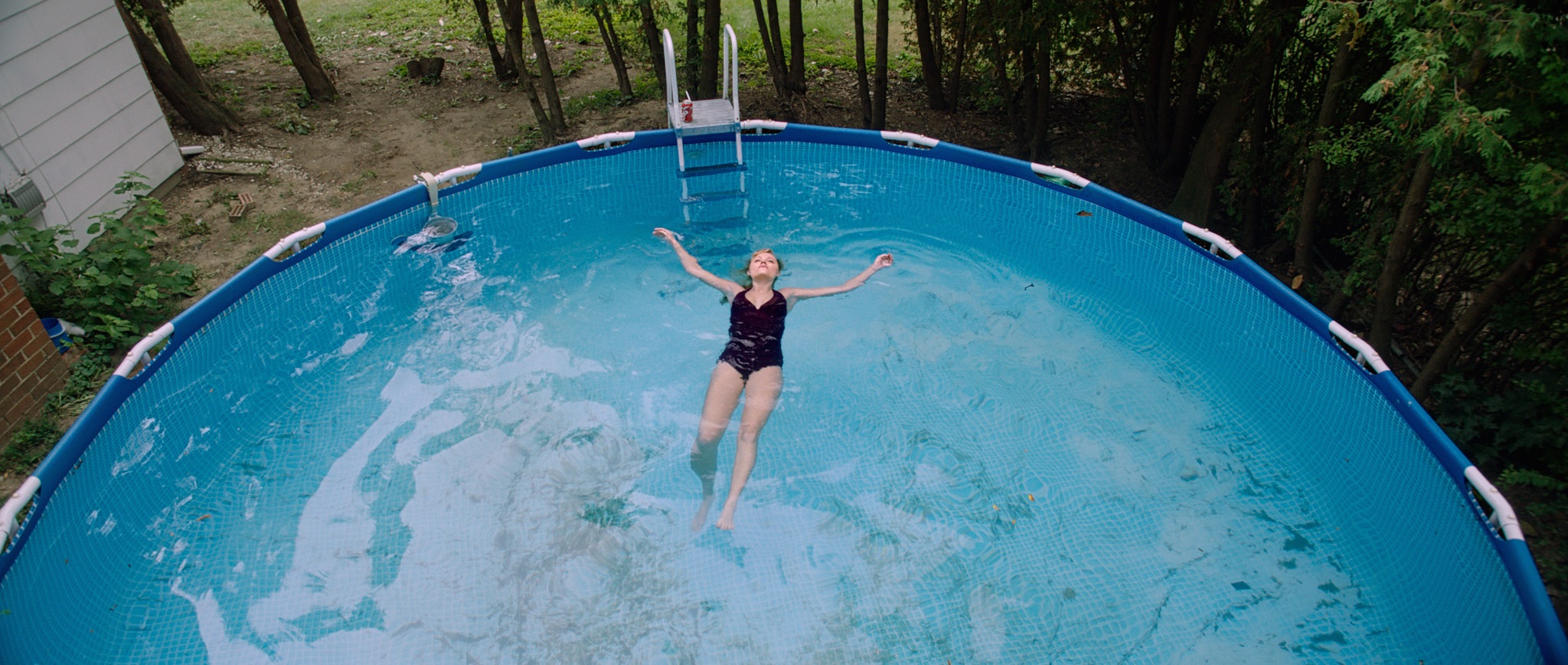
In mid-2014 indie horror It Follows started making ripples on the film festival circuit, delivering on the hype in screenings at festivals down under that same year. This March the film received a limited release in the US, performing so well its initial four screens quickly expanded to 1,655, and turned an estimated $2 million budget into a minor commercial success. No wonder then, that a lot of attention has been paid to lead Maika Monroe, whose performance anchors the film and must play no small part in the recent news that she’s joined the cast of Independence Day 2. Although that news arrived too late to bring up when we spoke, I was still chuffed at the chance to talk with this new screen sensation as It Follows returns to New Zealand cinemas. Seriously, you’ve got to see it – check out our five-star review.
FLICKS: You’re talking to me today quite late in the actual life cycle of the film. I wonder if it feels a bit like you’re being followed around by it, almost like your character is by the monster in the movie?
MAIKA MONROE: Yes, very much so. We started almost a year ago premiering at the Cannes Film Festival in 2014. So it’s almost been a full year of press and festivals for this film. Right when you think that it’s done, it’s not and it comes back!
It sounds like you’re in the third act of a horror movie – maybe it’s over. but nope, here it…
…but then here comes again pretty much. Yes, that’s a good way to describe it.
Still, it must be better than if ‘It Follows’ were just run-of-the-mill. But this one’s just really made such a massive impact with all the people that have seen it.
Yeah. It’s been very surreal. Just what has happened with this movie , it’s been very cool.
To see this festival hit end up getting a full theatrical release for what is really a tiny, tiny film must be pretty special.
Oh, yeah. I don’t think anyone really expected this to happen. We opened on Friday the 13th in four movie theaters and I guess we broke some records or something and so they expanded to 1,200 movie theaters I believe it was and then the following weekend, they added 500 more movie theaters and it just kind of kept expanding and expanding so it’s been crazy, yeah.

How did you first encounter ‘It Follows’?
I was filming another project and I received the script and I read over it and thought that it was kind of bizarre and wasn’t sure how it was going to translate into a movie. I didn’t know how audiences would take the subject matter and everything. Then I looked into the director [David Robert Mitchell] and started doing my research because there was something very interesting and intriguing about it. I watched David’s previous film The Myth of the American Sleepover and it’s such a neat style and way to tell a story, and I just felt like, “Okay, this guy knows what he’s doing and he’s going to make something interesting with this script.” I really wanted to work with him and I guess that’s kind of how it started.
As an actor, were you looking for any particular kind of parts around that time?
I was filming The Guest during the time that I auditioned. For me, I read the script and I look at the character first and if it’s something that I would want to do and something that’s kind of challenging and different, that’s usually initially what draws me to a project and that was kind of the same with this.
You mentioned it was a bit difficult to imagine how exactly it would translate to the screen. How did you respond to David’s decision making in those moments that weren’t so clear in the screenplay?
Yeah, there is a lot of stuff that as an actor you kind of miss out on. You don’t get to see a lot of what’s happening and so seeing the final cut and the cinematography and the music that are two huge aspects of the film, I was kind of blown away. I mean I had no idea that it was going to come together like it did. So yeah, the sound track just couldn’t be more perfect for the movie.
Considering that the score kind of sets so much of the mood for the audience, how did you get into that kind of head space that’s going to match up with the dread that’s required or dread that the audience seems to be sensing in the scenes?
Well, for me with the subject matter like this it could come across very ridiculous. I think with any horror movie it usually will be ridiculous whatever you’re trying to portray. For me, I just want to make it as real as possible and use as many real feelings as I can and then obviously, you’ve got to add some in there. Use your imagination for things whether you’re running away from your wife, or running from a demented, creepy looking thing. But I guess yeah, I wanted to base my performance in realism as much as I could so then the audience can feel everything that she’s going through, and more so.
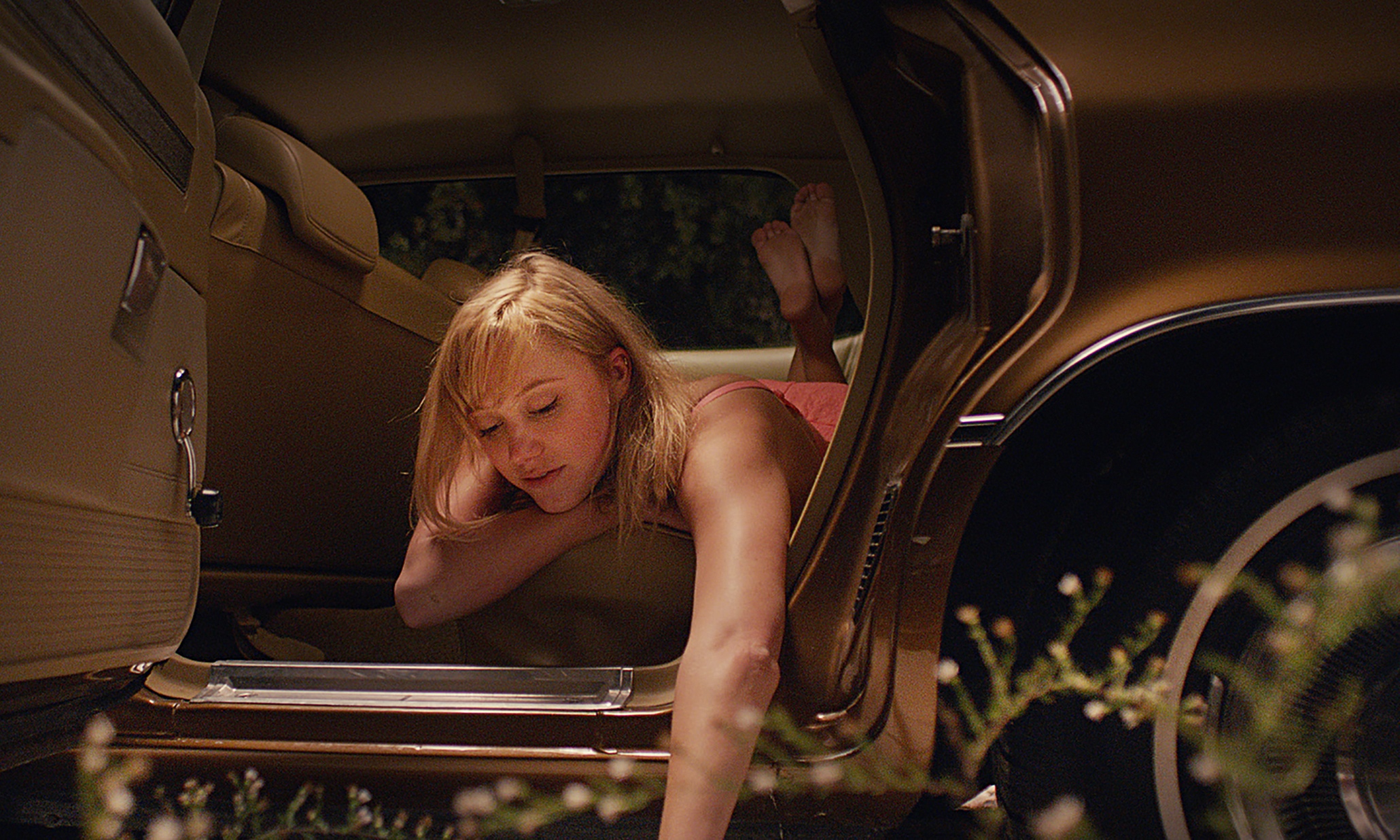
One of the scenes that connected me with your character most strongly was when you’re lying on the back seat of the car just talking about what you think your future might be like. Your thoughts about having a boyfriend and stuff. It just seemed like such an honest and open human moment.
Yeah, I know. I like that scene. I like how they edited it together too.
Is that the sort of stuff that jumped out at you from David’s first film, capturing the reality of people again?
Oh, yeah. I don’t think he used any actors. He just had kids come in and audition in Detroit where he filmed it, but there were no actors involved. It was just so real and raw and no added fluff or anything. I see It Follows almost as part two of it, like throwing these same kind of kids from a normal situation into an insane situation. It [Myth] is really bizarre and amazing.
What was it like shooting in Detroit? The setting of the film’s a really critical part to it, there’s just something about that suburban decay that really, really works.
Yeah, Detroit is incredible and everywhere you look… I mean, I’ve never seen a place like that, especially in the United States. This city that used to be thriving and now you see buildings destroyed, nature taking over them, houses being burnt down. It’s just a very bizarre place, but yet so perfect for this movie.
It’s chilling to see the classic middle class environment just turning to crap. It’s kind of the opposite of a Steven Spielberg setting.
Pretty much, yes [laughs].
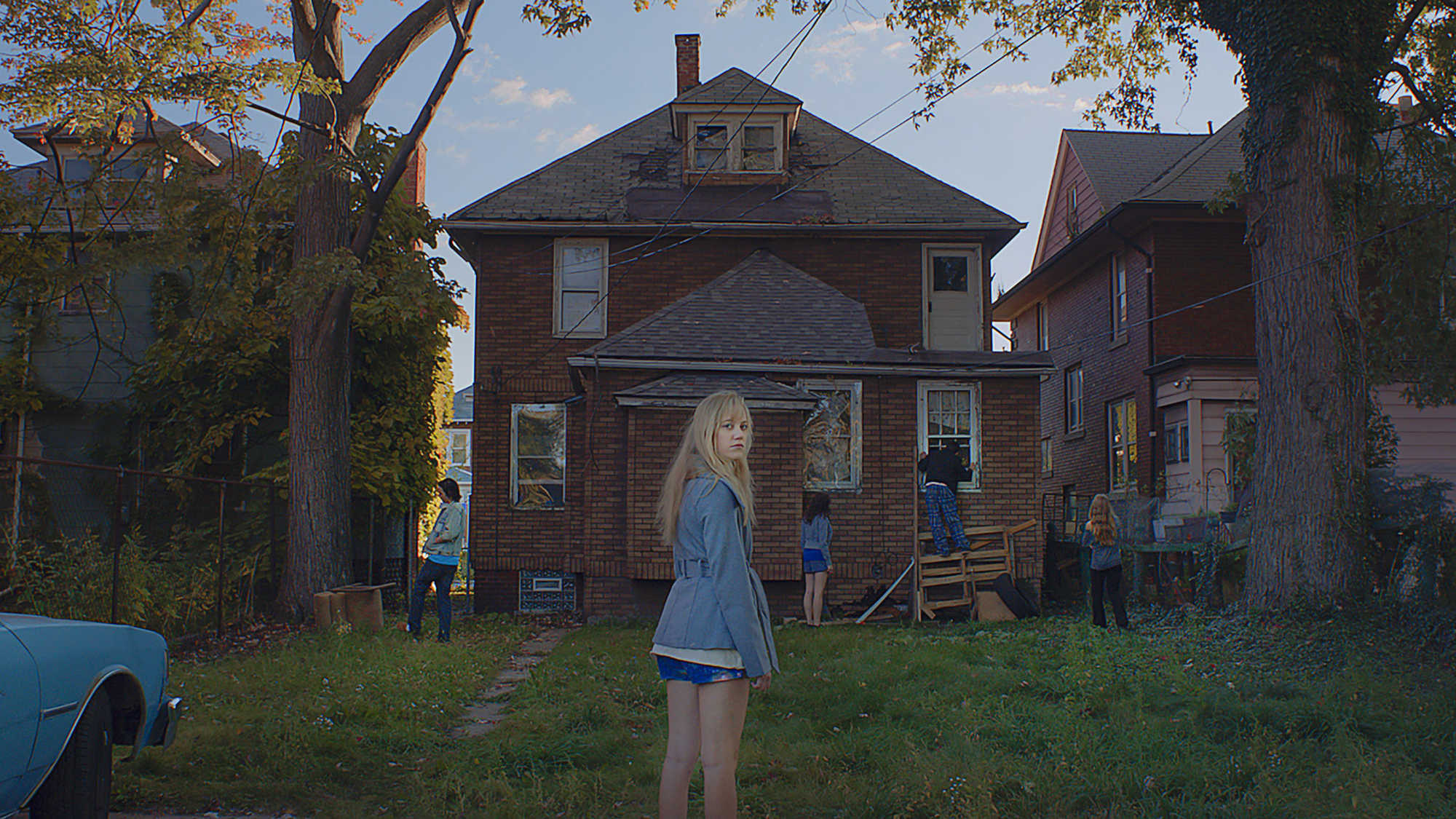
A lot’s open to interpretation in the film. Did you have a kind of specific idea about how some of the scenes, how some of the events, and how some of the reasoning of the film played out for yourself as you went through the shoot?
Yeah. I definitely had my own ideas in my head and figured out just for myself and for the character some of the decisions she makes which sometimes you don’t see on scene, or the scene doesn’t finish up. You don’t really know what she chose. In my own head, I knew what happened, but I like keeping it to myself because it’s been very cool these different interpretations and hearing so many different ideas. It’s been very cool.
What was the most difficult part of the shoot for you? What scenes did you find the most awkward or hard to execute?
The wheelchair scene was easily the hardest scene. We were five weeks into filming, it was the last day of our shoot and it was a night shoot and we’re filming in this abandoned factory. It was very, very creepy and then it was actually the coldest night of the year so far and you’ve seen the movie, I’m not wearing a lot in that scene, but yet I couldn’t be shivering. So it was just mentally and physically a very difficult scene and we just spent a lot of time on it because it’s an an important scene. You find out a lot of information then and so that was not easy.
Do you feel the pressure of having a crew there while you’re trying to carry that sort of scene?
No, surprisingly what I’ve noticed when you’re filming is that you forget about that sort of stuff as much as you can and you’re just focusing on what you’re doing and you’re not paying attention to the cameras or the people around you. Yeah, I don’t really take note of it until after you call cut and you’re like, “Oh, yeah, okay, there’s all these people there”. But during the film, I don’t really pay attention, or at least I try not to.
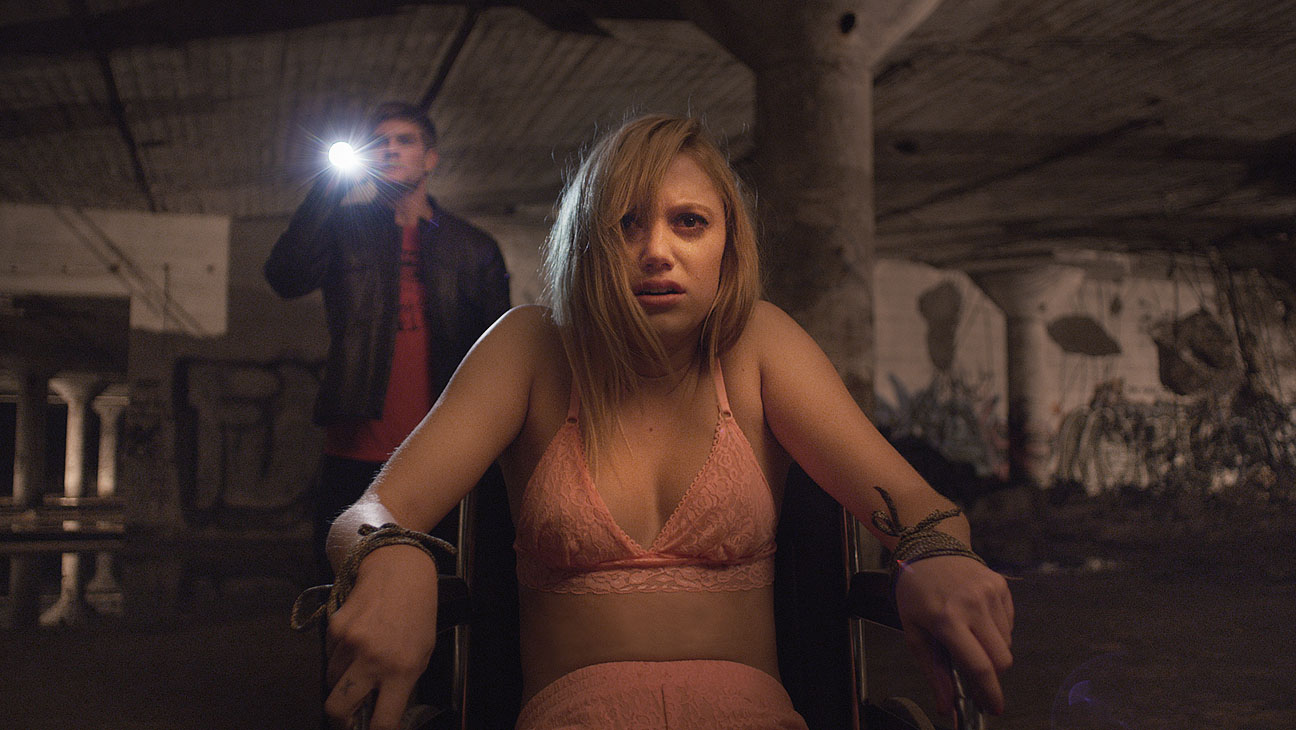
That, as you mentioned, is the scene where you’re scantily clad and is also some of the key art for the film. Is that kind of weird that the whole world is getting familiar with the sight of you sitting in your undies on a chair looking a bit uncomfortable?
I don’t think of it that way. I think David has this vision and with this movie there’s a lot of vulnerability for me and knowing how many people are watching it and stuff. You can’t really think about that, you kind of have to let go of that and remember that in a sense it’s not really me, it’s someone else so you try and disconnect from it, I guess, as much as you can.
We haven’t had the chance to see ‘The Guest’ yet, but that’s two quite massively, critically praised movies for you in a year. That must be quite awesome.
I mean yeah, it is very awesome. I did not expect it at all. It’s very exciting, but I just didn’t really expect it I guess.
It’s not like you’re, “Hey, I’m going to be the horror queen”. You’ve been doing quite a range of other pics.
Yeah a couple of months ago I finished The Fifth Wave which – I hate using this as an example – like The Hunger Games is a very popular young adult novel, a trilogy series. But it takes place now and it’s with more relatable characters so I’m really excited about that. That comes out January 2016 and then coming up I start filming a movie called The Tribes of Palos Verdes with Jennifer Garner and Matt Dillion that I’m super excited about.
Yeah, it’s some different stuff that aren’t necessarily in horror – but you never know, I could be back!















